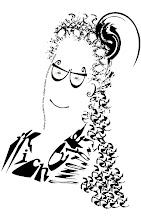
Freedom is a female allegorical figure who holds a sheathed sword in her right hand and a laurel wreath of victory and the shield of the United States with thirteen stripes in her left hand. She wears a helmet adorned with stars and an eagle's head. A brooch inscribed "U.S." secures her fringed robes. She stands facing east on a cast-iron globe encircled with one of the national mottoes, E pluribus unum. The lower part of the base is decorated with fasces and wreaths. Ten bronze points tipped with platinum are attached to her headdress, shoulders, and shield for protection from lightning. The bronze statue stands 19 feet 6 inches (6 m) tall and weighs approximately 15,000 pounds (6,800 kg). Her crest rises 288 feet (88 m) above the east front plaza.
A monumental statue for the top of the national Capitol appeared in architect Thomas U. Walter's original drawing for the new cast-iron dome, which was authorized in 1855. Walter's drawing showed the outline of a statue representing Liberty; Crawford proposed an allegorical figure of Freedom Triumphant in War and Peace.
Crawford was commissioned to design the Statue of Freedom in 1854 and executed the plaster model for the statue in his studio in Rome. He died in 1857 before the model left his studio. The model, packed into six crates, was shipped from Italy in a small sailing vessel in the spring of 1858. During the voyage the ship began to leak and stopped in Gibraltar for repairs. After leaving Gibraltar, the ship began leaking again to the point that it could go no farther than Bermuda, where the model was stored until other transportation could be arranged. Half of the crates finally arrived in New York City in December, but all sections were not in Washington, D.C. until late March 1859.
Beginning in 1860, the statue was cast in five main sections by Clark Mills, whose bronze foundry was located on the outskirts of Washington. Work was halted in 1861 because of the Civil War, but by the end of 1862 the statue was finished and temporarily displayed on the Capitol grounds. The cost of the statue, exclusive of installation, was $23,796.82. Late in 1863, construction of the dome was sufficiently advanced for the installation of the statue, which was hoisted in sections and assembled atop the cast-iron pedestal. The final section, the figure's head and shoulders, was raised on December 2, 1863, to a salute of 35 guns answered by the guns of the 12 forts around Washington.
While Freedom was being cast at Mills' foundry the foreman in charge of the casting went on strike. Instead of paying him the higher wages he demanded Mills turned the project over to Philip Reid, one of the slaves working at the facility. Reid presided over the rest of the casting and assembly of the figure. The figure was placed in position on December 2, 1863. Reid had to wait until November 1864, at which time he, at least symbolically, received his freedom cap.
On May 9, 1993, after being in place almost 130 years, the statue was brought down from its pedestal by helicopter for restoration, also giving tourists a chance to see the statue up close. The work was needed because of extensive pitting and corrosion on the surface of the bronze and because of a crack and rusting on the cast-iron pedestal. The project was guided by the recommendations of a thorough conservation and engineering study conducted in 1991. The United States Capitol Preservation Commission provided $780,000 in privately raised funds, which covered all project costs. The work was performed by New Arts Foundry, of Baltimore, Maryland.
The cast-iron pedestal was restored in place atop the dome. The metal was stripped of paint, and the wreaths and fasces were removed to ensure that they were thoroughly cleaned and coated. The crack was permanently repaired, and the entire pedestal was primed and painted with a color specially mixed to match the statue. Since then, every 2-3 years, the statue undergoes two weeks of cleaning and recoating as necessary.
Restoration of the statue and the pedestal was completed in approximately four months. The Statue of Freedom was returned to its pedestal by helicopter on October 23, 1993, amid the celebration of the bicentenial of the U.S. Capitol.
The plaster model of the statue, which had been in storage for 25 years, was reassembled and restored in the basement rotunda of the Russell Senate Office Building, where it was returned to permanent public display in January 1993. The plaster model was relocated to the Emancipation Hall of the Capitol Visitor Center, which provides visitors a much closer look at the statue’s details.[3]
The head of the statue is depicted on a postage stamp (United States Scott No. 573), which was re-issued in 2006.
The statue was originally topped by a liberty cap but Jefferson Davis (who later became the President of the Confederacy) was in charge of the construction and refused to allow the statue to wear a hat. He told the sculptor to either remove the hat or he would give the commission to someone else. Davis was a scholar of ancient Rome and he knew that only freed slaves (in Rome) wore these hats and he didn't want to have a freed slave on top of the Capitol Dome. So the American eagle helmet replaced the hat when the sculpture was made. Most people look at the statue and the eagle and assume the statue is of an American Indian, but this is not true it is of a freed slave wearing the American eagle helmet. (This is according to a story on PBS News Hour on Jan 16. Jesse Jay Holland author of "Black Men Built the Capitol" is interviewed.) This podcast: (http://www-tc.pbs.org/newshour/rss/media/2009/01/16/20090116_slaves.mp3)





No comments:
Post a Comment